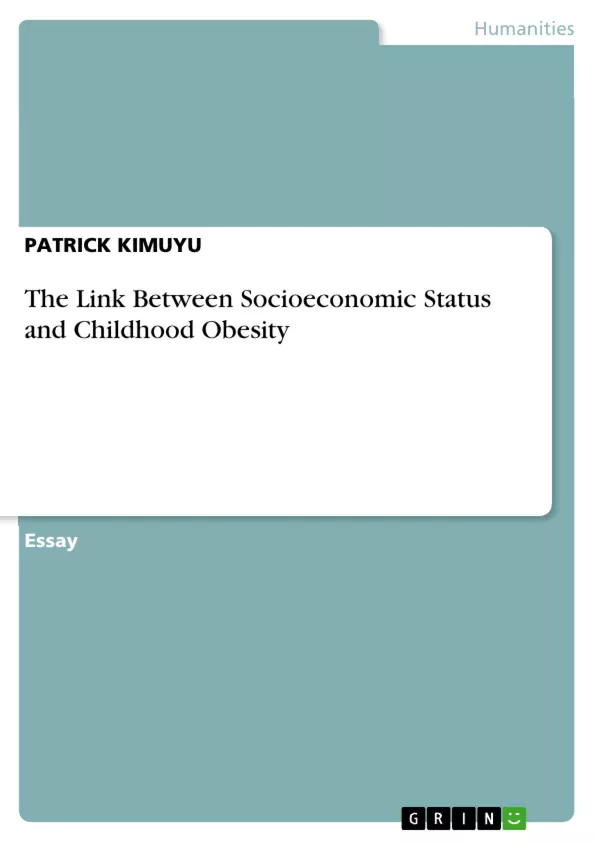Childhood obesity is seemingly becoming an enormous epidemiological challenge to the global healthcare system. In the past decade, prevalence rates of childhood obesity have assumed upward trends, in which developed countries record the highest percentages of obese and overweight children. However, prevalence rates in developing countries are increasing at a slow phase but, the overall obese children population remains relatively low.
Therefore, this research paper will give an overview of the correlation between Socioeconomic Status and childhood obesity. Although there are many factors that put children at risk for childhood obesity, Social Economic Status seems to affect all risk factors that are responsible for the increase in childhood obesity.
Inhaltsverzeichnis (Table of Contents)
- Introduction
- Socioeconomic Status and Childhood Obesity
- Neighborhood Environments and Childhood Obesity
- Physical Activity and Sedentary Lifestyle
- Economic Status
- Educational Status
- Conclusion
- References
Zielsetzung und Themenschwerpunkte (Objectives and Key Themes)
This research paper aims to provide a comprehensive overview of the relationship between socioeconomic status (SES) and childhood obesity, exploring how SES influences various obesity risk factors. The paper examines the impact of SES on the prevalence of childhood obesity in both developed and developing countries, focusing on the demographic inequalities evident in obesity trends.
- The influence of socioeconomic status on childhood obesity prevalence.
- The role of neighborhood environments and social conditions in shaping obesity risks.
- The relationship between physical activity, sedentary lifestyles, and socioeconomic factors.
- The impact of economic and educational status on childhood obesity prevalence.
- The implications of socioeconomic disparities in childhood obesity for public health interventions.
Zusammenfassung der Kapitel (Chapter Summaries)
- Introduction: This chapter introduces the growing global challenge of childhood obesity, highlighting the upward trends in prevalence rates, particularly in developed countries. It provides an overview of the public health concerns associated with childhood obesity and establishes the significance of socioeconomic status as a contributing factor.
- Socioeconomic Status and Childhood Obesity: This chapter delves into the relationship between SES and childhood obesity, emphasizing the influence of SES on various risk factors. It discusses the prevalence of childhood obesity in different socioeconomic strata and explores the interconnectedness between SES and obesity trends among both children and adults.
- Neighborhood Environments and Childhood Obesity: This chapter examines the impact of neighborhood environments on childhood obesity. It explores how social and economic conditions in neighborhoods can influence obesity risks, particularly focusing on the relationship between socioeconomic deprivation, access to healthy food options, and opportunities for physical activity.
- Physical Activity and Sedentary Lifestyle: This chapter focuses on the role of physical activity and sedentary lifestyles in childhood obesity. It discusses how SES can affect children's access to safe spaces for physical activity, opportunities for active transportation, and exposure to sedentary behaviors.
Schlüsselwörter (Keywords)
This research paper delves into the intricate relationship between socioeconomic status and childhood obesity, emphasizing the influence of various socio-demographic factors on the prevalence of obesity in different communities. Key concepts include socioeconomic disparities, neighborhood environments, physical activity, sedentary lifestyles, and demographic inequalities, highlighting the critical need to address these factors in public health interventions aimed at mitigating childhood obesity.
- Quote paper
- PATRICK KIMUYU (Author), 2007, The Link Between Socioeconomic Status and Childhood Obesity, Munich, GRIN Verlag, https://www.grin.com/document/378621



